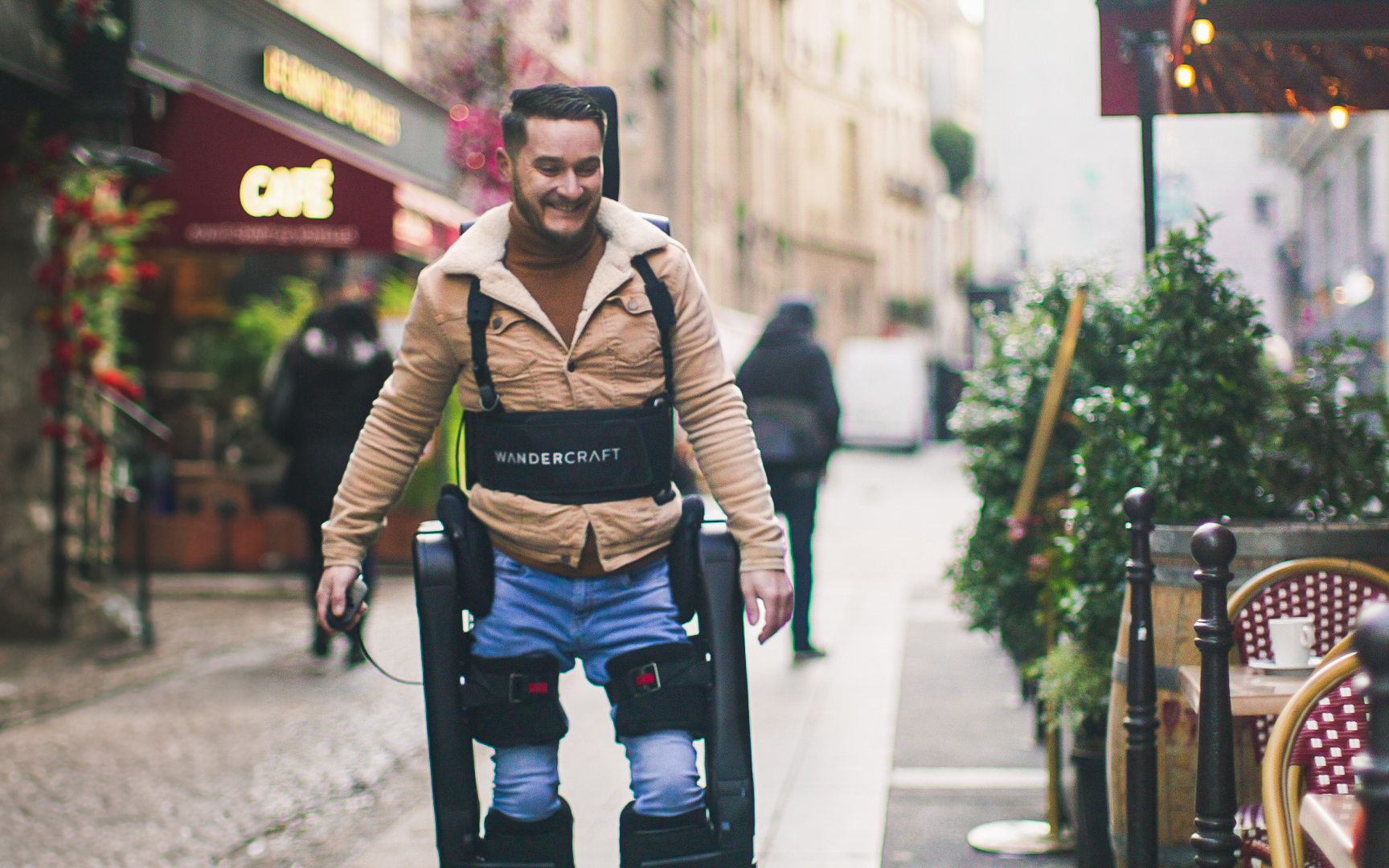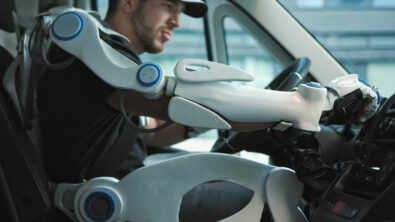Wandercraft exoskeletons empower wheelchair users to walk

Origins of Wandercraft
Nicolas Simon has several family members who suffer from Charcot-Marie-tooth, a degenerative condition that, in its advanced stages, often requires patients to use a wheelchair.
With no known cure, Simon wanted to provide an alternative. So, in 2012, he founded Wandercraft to develop an exoskeleton that would allow those who are disabled below the waist to walk again.
The company started by producing the Atlante X, which operated in rehabilitation settings, but his goal was always to expand beyond the healthcare setting in a hospital.
“We want to give people more autonomy and use these exoskeletons in the real world”
Fabien Expert, Wandercraft
Walk the streets in an exoskeleton
Taking the exoskeleton out of the controlled environment and into the streets means that it must be able to handle infinitely more challenges including both the actual and metaphorical banana skins that may lay in its path. Since it would be near impossible to guarantee that the system would never fall while a user is wearing it, the much safer option was to create a system that protects the user in the event of a fall.
In this case study, we talk to the Wandercraft chief technology officer, Fabien Expert, and Maxime Beck, Head of Mechanical Engineering. They explain how they use Simcenter Madymo to simulate fall scenarios and airbag deployment to develop safer exoskeleton designs and make it possible for people to walk again.
“Thanks to Simcenter Madymo, we’ll always be able to ensure that devices with these new features will be safe for the users.”
Fabien Expert, Wandercraft


